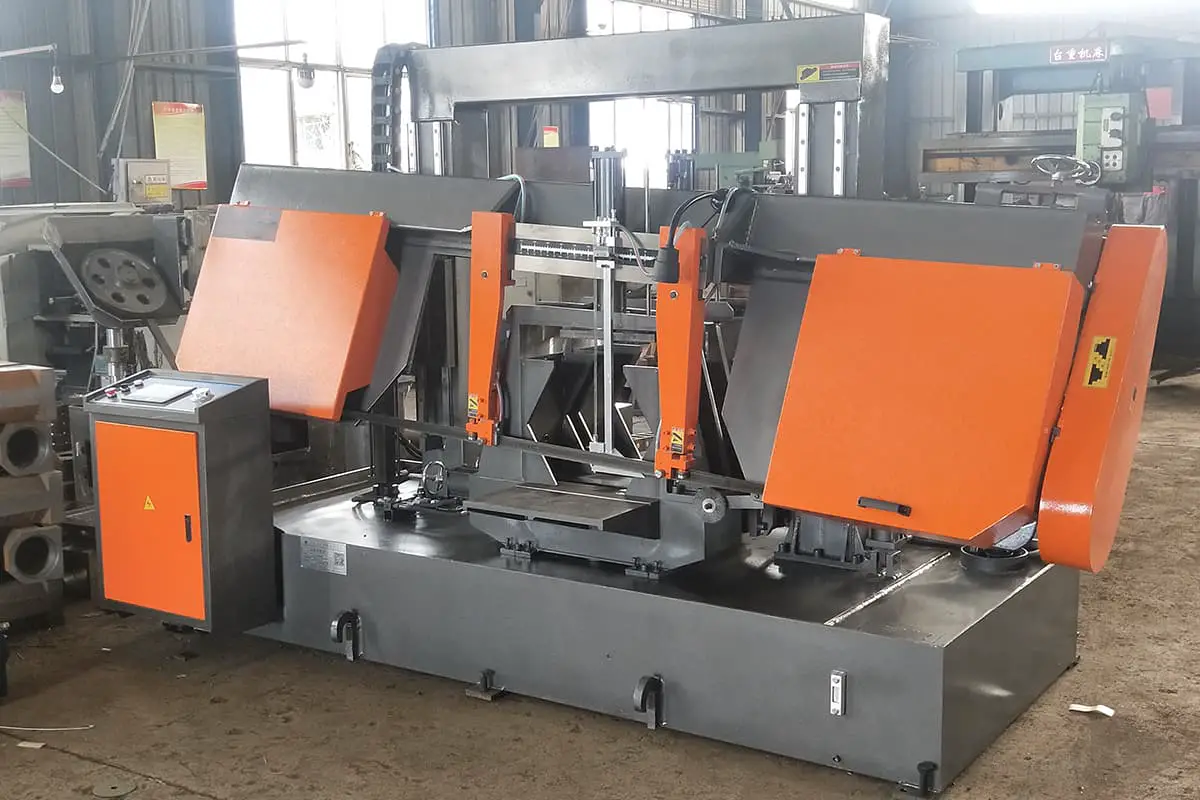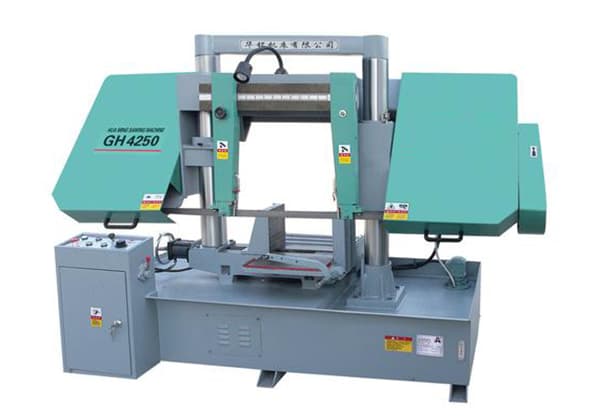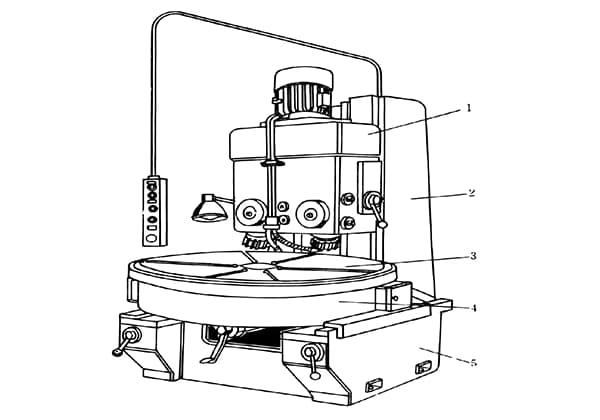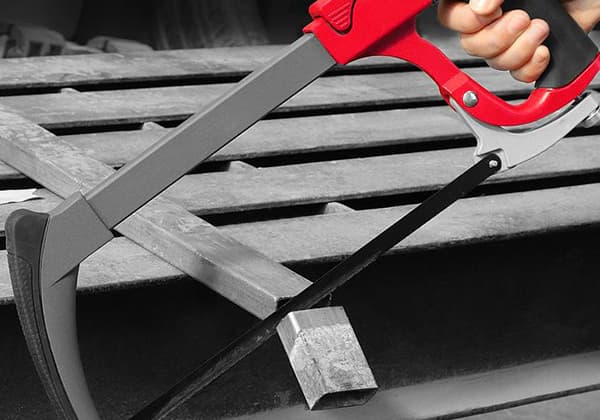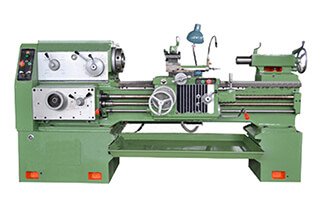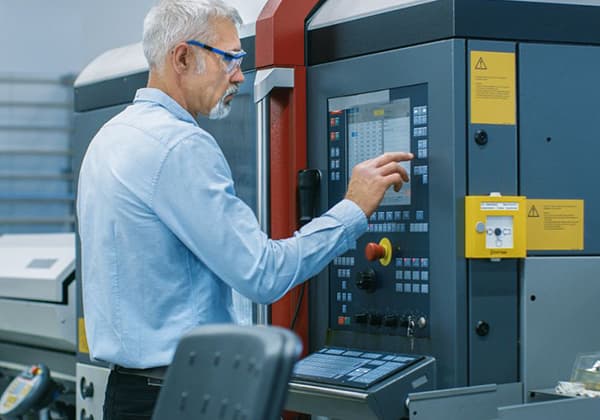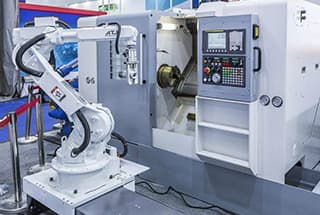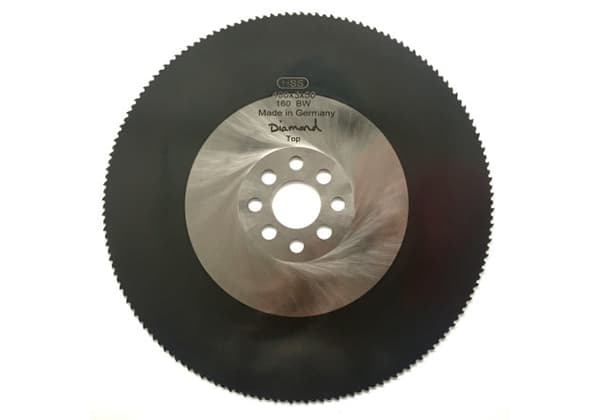
Have you ever wondered how the right saw blade can transform your woodworking projects? From selecting the best carbide type to understanding tooth count and angles, this guide demystifies the complex world of saw blades. You’ll learn how each parameter affects performance and quality, helping you choose the perfect blade for your needs. Ready to enhance your craftsmanship and efficiency? Dive into the detailed insights and practical tips that will elevate your woodworking skills.
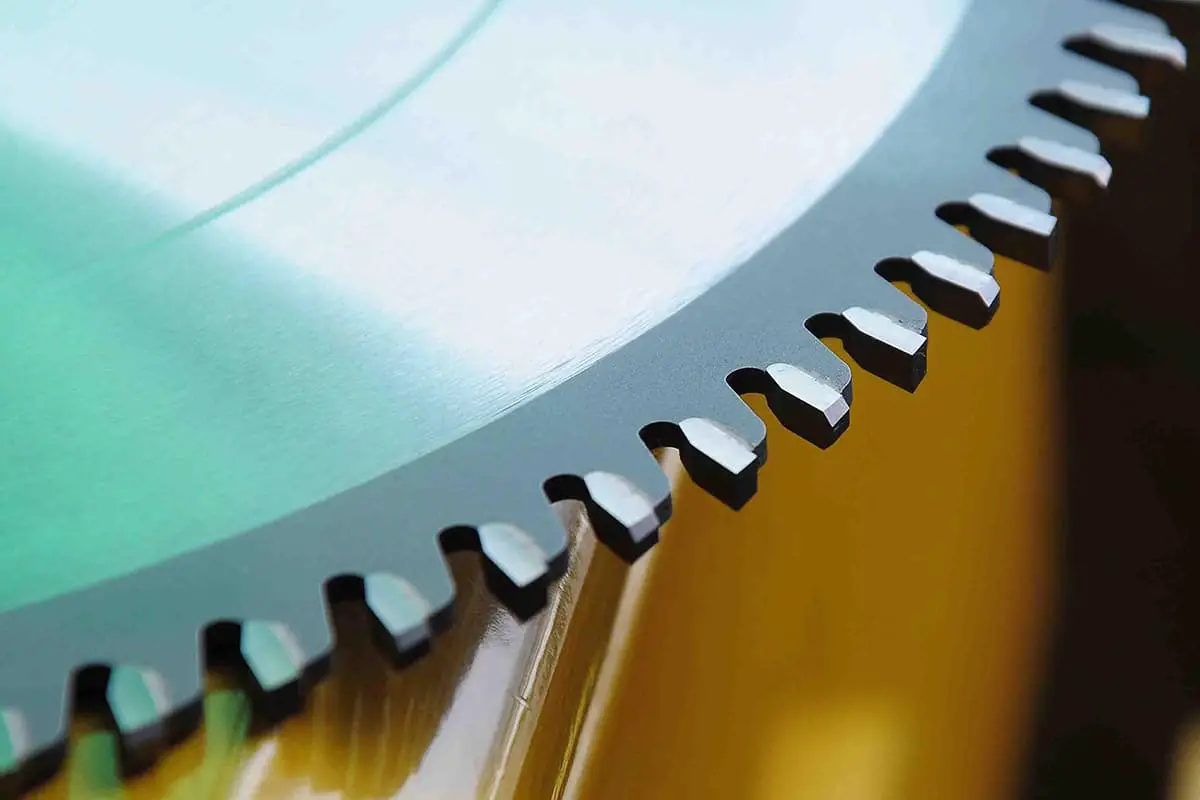
Carbide saw blades are the most frequently used tools for woodworking. The quality of carbide saw blades is closely related to the quality of processed products.
The correct and rational selection of carbide saw blades is of great significance for improving product quality, shortening processing cycles, and reducing processing costs.
Parameters of carbide saw blades include the type of alloy cutter head, the material of the substrate, diameter, number of teeth, thickness, tooth shape, angle, and aperture; these parameters determine the processing capability and cutting performance of the saw blade.
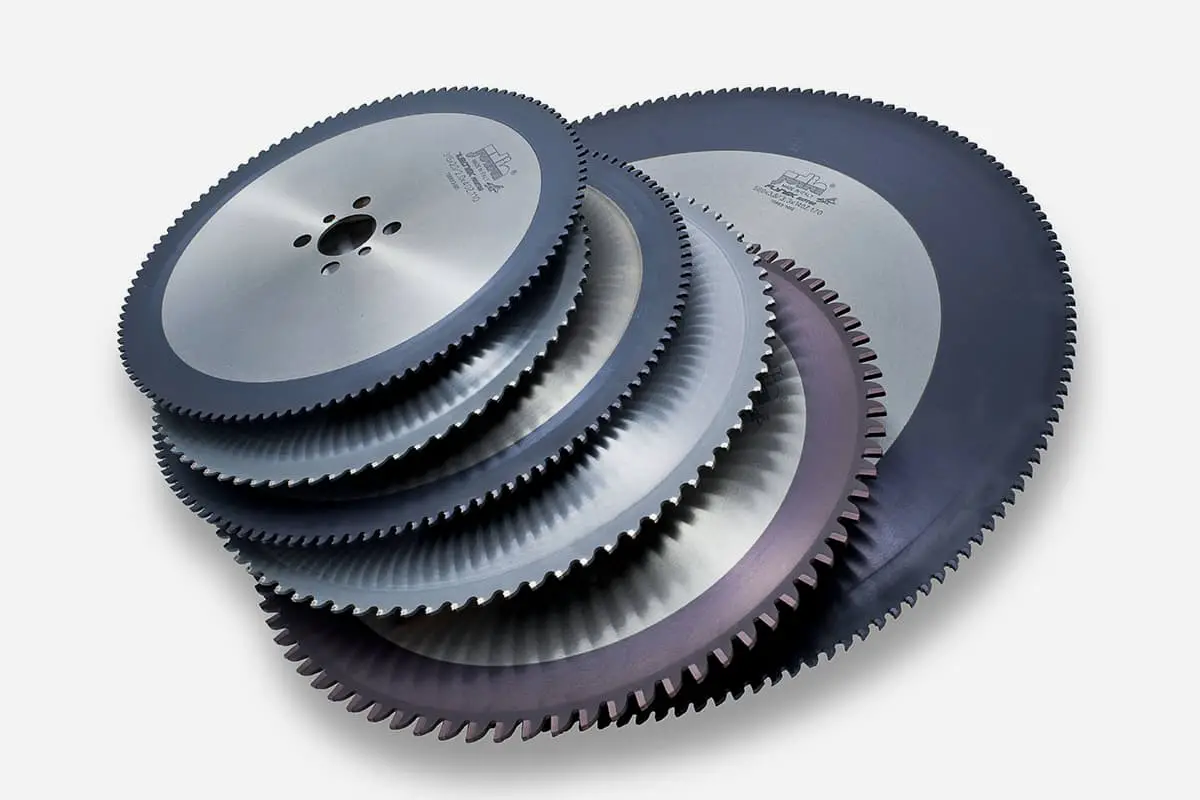
When selecting a saw blade, it is necessary to consider the type, thickness, cutting speed, cutting direction, feed speed, and width of the sawing path of the material to be cut.
Common types of carbides include tungsten cobalt (code YG) and tungsten titanium (code YT). Tungsten cobalt carbides are more impact-resistant and thus more widely used in the woodworking industry.
The models commonly used in woodworking range from YG8 to YG15. The number following YG indicates the percentage of cobalt content.
An increase in cobalt content improves the alloy’s impact toughness and bending strength, but it reduces hardness and wear resistance. The choice should be made based on actual conditions.
1. 65Mn spring steel has good elasticity and plasticity. It’s economical, with good hardenability from heat treatment. However, it deforms easily at low heat temperatures and is suitable for saw blades with low cutting requirements.
2. High-carbon tool steel has high carbon content and thermal conductivity. When subjected to temperatures of 200℃-250℃, its hardness and wear resistance decrease sharply.
It has high heat treatment deformation, poor hardenability, and tends to crack during long tempering times. It’s an economical material for tool manufacturing, such as T8A, T10A, T12A, etc.
3. Compared with high-carbon tool steel, alloy tool steel has better heat resistance, wear resistance, and machinability. It withstands heat deformation well at 300℃-400℃, making it suitable for high-grade alloy circular saw blades.
4. High-speed tool steel has excellent hardenability, hardness, and rigidity. It deforms less under heat, belongs to ultra-high-strength steel, and has stable heat plasticity. It’s suitable for manufacturing high-end ultra-thin saw blades.
The diameter of the saw blade is related to the sawing equipment used and the thickness of the workpiece being sawed.
A smaller diameter results in a relatively lower cutting speed; a larger diameter places higher demands on the saw blade and sawing equipment, while also increasing cutting efficiency.
The outer diameter of the saw blade is selected based on the model of the circular saw machine, using a blade that matches the diameter.
Standard diameters include: 110MM (4 inches), 150MM (6 inches), 180MM (7 inches), 200MM (8 inches), 230MM (9 inches), 250MM (10 inches), 300MM (12 inches), 350MM (14 inches), 400MM (16 inches), 450MM (18 inches), 500MM (20 inches), etc. Precision panel saws often use bottom groove blades designed at 120MM.
Generally speaking, the higher the tooth count of a saw, the more cuts it can make in a given time period, resulting in better cutting performance. However, a higher tooth count requires more carbide, raising the price of the blade.
On the other hand, if the teeth are too dense, the chip capacity between the teeth decreases, potentially causing the blade to overheat.
Additionally, if there are too many teeth and the feed rate is not properly adjusted, each tooth will remove only a small amount of material, exacerbating friction between the cutting edge and the workpiece, which can shorten blade lifespan.
Typically, the tooth spacing is between 15-25mm, and a reasonable tooth count should be chosen based on the material being sawed.
Theoretically, the thinner the saw blade, the better, as the saw kerf is essentially a form of waste.
The material of the alloy saw blade base and the saw blade manufacturing process determine the thickness of the saw blade. If the blade is too thin, it can wobble during operation, affecting the quality of the cut.
The choice of blade thickness should take into consideration both the stability of the saw blade’s operation and the material being sawed.
Some specialty materials require a specific thickness, and should be used as the equipment requires, like for grooving saw blades, scoring saw blades, etc.

Common tooth forms include alternating teeth, flat teeth, trapezoidal teeth (high and low teeth), inverted trapezoidal teeth (tapered teeth), dovetail teeth (hump teeth), and the less common industrial-grade three-left one-right, alternating flat teeth, among others.
1. Alternating teeth are most widely used due to their fast cutting speed and relative ease of sharpening. They are suitable for cross-cutting various soft and hard solid wood profiles, as well as density boards, multilayer boards, and chipboards.
Alternating teeth equipped with anti-kickback teeth protection are known as dovetail teeth, perfect for longitudinal cutting of various knotted boards.
Saw blades with negative front angle alternating teeth are used for cutting veneer boards because of their sharp teeth and high-quality cut.
2. Flat teeth result in a rougher cut and slower cutting speed, but they are the easiest to sharpen. They are primarily used for cutting ordinary wood.
These are more cost-effective and are frequently used on smaller diameter saw blades for aluminum to reduce adhesion during cutting, or on grooving blades to maintain a flat groove bottom.
3. Trapezoidal teeth are a combination of trapezoidal and flat teeth. Though they are more complex to sharpen, they can reduce veneer chipping during cutting.
These are suitable for single and double veneered man-made boards and fire-resistant boards. To prevent adhesion, aluminum saw blades often use trapezoidal teeth with a higher tooth count.
4. Inverted trapezoidal teeth are commonly used in bottom grooving saw blades for panel cutting.
While cutting double-faced man-made boards, the groove saw adjusts the thickness to process the bottom groove, followed by the main saw for the board cutting process, preventing edge chipping.
In summary, for cutting solid wood, chipboards, and medium density boards, alternating teeth should be chosen to sharply cut wood fiber tissues and smooth the cut.
To maintain a flat groove bottom, use flat teeth or a combination of alternating and flat teeth. For cutting veneered boards and fire-resistant boards, trapezoidal teeth are generally chosen.
Due to the high cutting rate of computer panel saws, the alloy saw blades used have larger diameters and thicknesses, usually between 350-450mm in diameter and 4.0-4.8mm in thickness, with most adopting trapezoidal teeth to minimize edge chipping and saw marks.
The angle parameters of the tooth portion are complex and highly specialized, with the correct selection of saw blade angles being essential for achieving quality sawing.
The primary angle parameters include the rake angle, clearance angle, and wedge angle.
The rake angle mainly influences the force consumed by sawing wood shavings. A larger rake angle results in better cutting sharpness, easier sawing, and less effort in pushing material.
When the material being processed is softer, a larger rake angle is preferred, and vice versa.
The tooth angle refers to the position of the tooth during cutting. The tooth angle affects the cutting performance.
The angles that most significantly impact cutting are the rake angle (γ), clearance angle (α), and wedge angle (β). The rake angle γ is the cutting angle of the tooth; the larger the rake angle, the smoother the cutting, typically between 10-15 degrees.
The clearance angle is the angle between the tooth and the already processed surface, serving to prevent friction between the tooth and this surface.
The larger the clearance angle, the less friction and the smoother the resulting product. For carbide saw blades, the clearance angle typically is 15 degrees. The wedge angle is derived from the rake and clearance angles.
However, the wedge angle cannot be too small as it helps maintain the tooth’s strength, heat dissipation, and durability. The sum of rake angle γ, clearance angle α, and wedge angle β equals 90 degrees.
The hole diameter is a relatively straightforward parameter, primarily chosen according to the equipment’s requirements.
However, to maintain the stability of the saw blade, a larger hole diameter is recommended for blades over 250MM.
The standard hole diameters in domestically designed parts are as follows: for diameters of 120MM and below, often a 20MM hole is chosen; for 120-230MM, a 25.4MM hole is common; for anything over 250MM, a 30-diameter hole is typical.
Some imported equipment may require a 15.875MM hole. The hole diameter for multi-blade saw machinery is more complex, often featuring keyways to ensure stability.
Regardless of hole size, modifications can be made using a lathe or wire cutting machine.
A lathe can machine a ring to fit inside a larger hole, and a wire cutting machine can enlarge a hole to meet the equipment’s requirements.
The types of alloy cutter heads, the material of the base, diameter, number of teeth, thickness, tooth shape, angle, hole diameter, and so on, constitute the entirety of a carbide saw blade.
Reasonable selection and matching of these parameters are necessary to fully leverage its advantages.
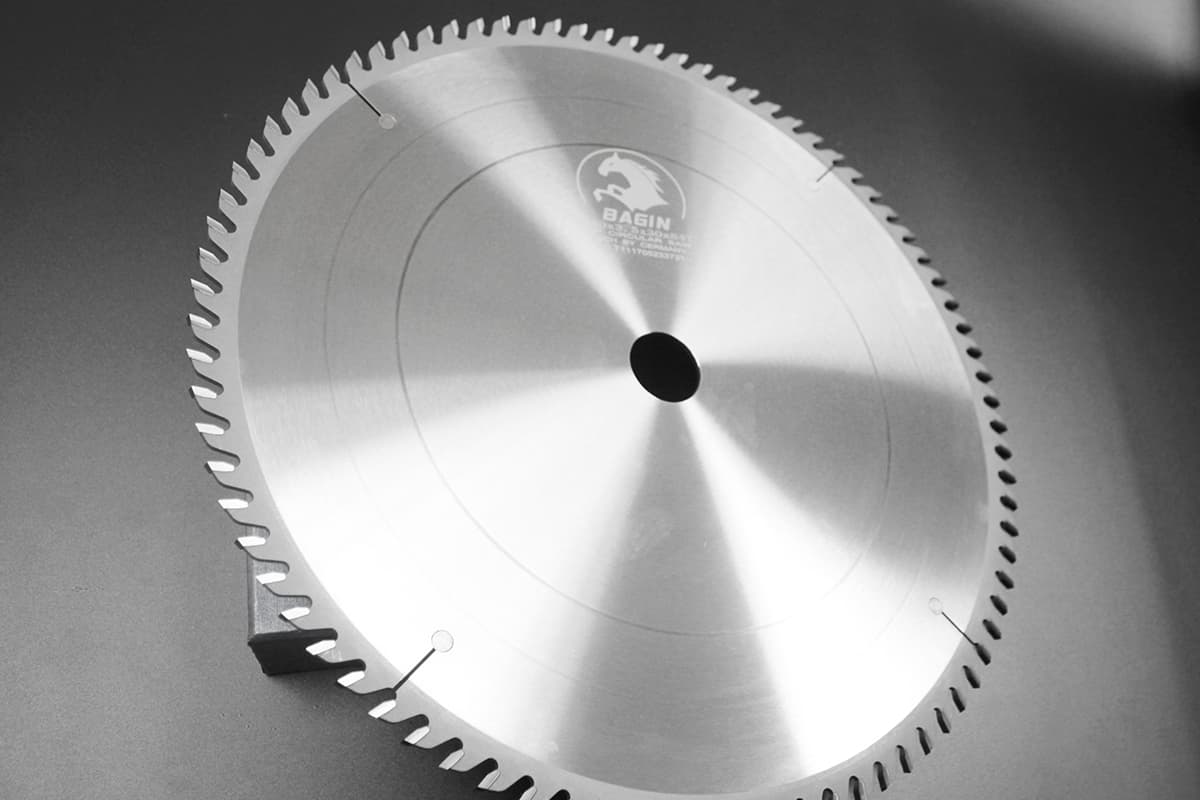
1. Choose the appropriate saw blade according to the design requirements of the equipment.
2. The matched equipment should have safety protection devices such as a protective cover, power-off brakes, and overload protection.
3. Professional operators should install and use the equipment, wearing work clothes, safety glasses, and ear protection.
4. Operators should not wear gloves, long hair should be tucked into a working hat, and ties and cuffs should also be monitored to avoid hazards.
5. Keep away from sources of fire and damp environments.
1. Ensure the equipment is in good condition, with no deformation in the main shaft, no radial runout, firm installation, and no vibration.
2. Check for any damage to the saw blade, ensure the tooth shape is complete, the saw plate is flat and smooth, and there are no other abnormalities to ensure safe use.
3. During assembly, make sure the direction of the saw blade arrow corresponds to the rotation direction of the equipment’s main shaft.
4. When installing the saw blade, keep the axle, chuck, and flange clean. The inner diameter of the flange should match the inner diameter of the saw blade to ensure a firm connection between the flange and the saw blade.
Install the positioning pin and tighten the nut. The size of the flange should be appropriate, its outer diameter should not be less than 1/3 of the saw blade diameter.
5. Before starting the equipment, ensure safety, have a single operator run the equipment idly to check if the equipment rotation is correct and there is no vibration.
After the saw blade is installed, let it run idly for a few minutes. If there is no slippage, swing, or jump, it can start normal work.
1. During work, ensure the workpiece is fixed and the profile positioning complies with the cutting direction to avoid abnormal cutting.
Do not apply lateral pressure or curve cutting. The feed should be steady to avoid the blade’s impact contact with the workpiece, which could lead to blade damage or workpiece ejection, causing accidents.
2. If abnormal sounds, vibrations, rough cutting surfaces, or unusual odors are detected during work, stop work immediately, check in time, and eliminate the fault to avoid accidents.
3. Do not feed too quickly when starting and stopping cutting to avoid broken teeth and damage.
4. If cutting aluminum alloy or other metals, use a dedicated cooling lubricant to prevent the saw blade from overheating, causing tooth burn and other damage, affecting the cutting quality.
5. Ensure the chip removal slot and suction device are unobstructed to prevent accumulated slag from forming blocks, impacting production and safety.
6. When dry cutting, do not cut continuously for extended periods to avoid affecting the saw blade’s service life and cutting effect. When wet cutting, add water to prevent electric leakage.
1. If the saw blade is not in immediate use, it should be stored flat or hung by its center hole. No objects should be placed or trodden upon a flat-stored blade, with attention given to moisture and rust prevention.
2. When the saw blade becomes dull or the cutting surface rough, it must be re-sharpened promptly. The re-sharpening process shouldn’t alter the original angle or disrupt the dynamic balance.
3. The factory must handle any alterations to the saw blade’s inner diameter and the machining of positioning holes.
Poor workmanship can impact the product’s performance and could potentially be dangerous. Hole enlargement should not exceed the original hole diameter by 20mm to avoid affecting stress balance.
4. Choosing an alloy grinding wheel.
1) Resin-bonded diamond grinding wheels have weak bonding strength, thus providing excellent self-sharpening during grinding.
They are less likely to clog, with high grinding efficiency, lower grinding force, and reduced grinding temperature.
The downside is their poor abrasion resistance and high tool wear, making them unsuitable for heavy-load grinding.
2) Ceramic-bonded diamond grinding wheels have better abrasion resistance and bonding ability than resin-bonded wheels.
They provide sharp cutting, high grinding efficiency, are less likely to overheat and clog, have low thermal expansion, and are easy to control precision. However, they leave a rougher grinding surface and are costlier.
3) Metal-bonded diamond grinding wheels have high bonding strength, good abrasion resistance, low wear, long life, lower grinding cost, and can withstand high loads, but they have poor sharpness and are prone to clogging.
4) Abrasive grain size has a significant impact on grinding wheel clogging and the amount of cutting.
Compared to fine grains, coarse grains allow for greater depth of cut and increased abrasive edge wear, while fine grains are more prone to clog the wheel.
5) The hardness of the grinding wheel significantly affects clogging. A high-hardness wheel has a high heat conduction coefficient, which is unfavorable for surface cooling but beneficial for improving machining precision and durability.
6) The choice of grinding wheel concentration is an important characteristic, greatly affecting grinding efficiency and processing cost.
Too low a concentration impacts efficiency, while too high a concentration leads to easier grain fallout. However, there is an optimal range for binder concentration.

